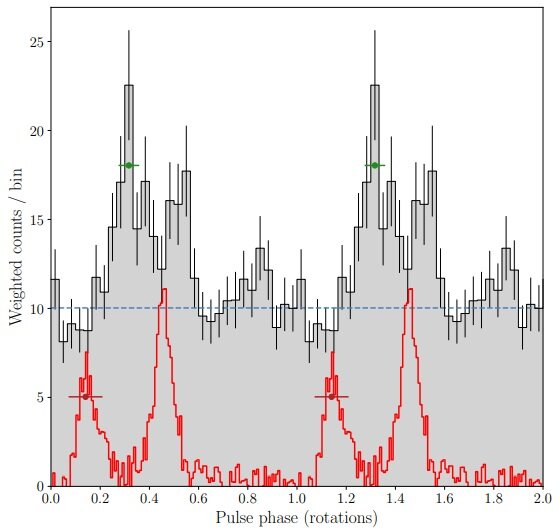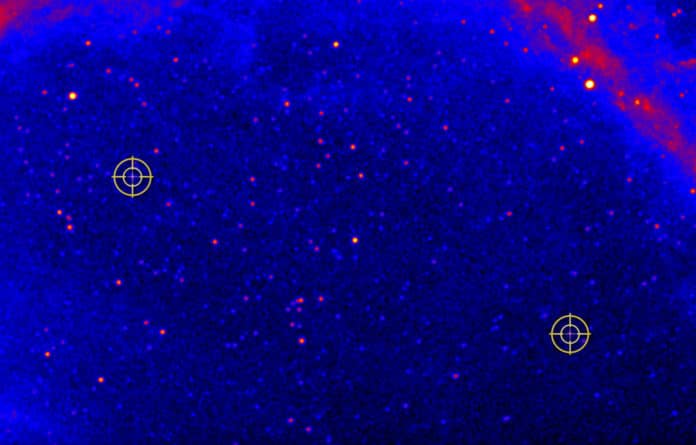In Sept. 2017, by following up on mysterious high-energy sources mapped out by NASA’s Fermi Gamma-ray Space Telescope, the Netherlands-based Low-Frequency Array (LOFAR) radio telescope has identified a pulsar spinning at more than 42,000 revolutions per minute, making it the second-fastest known.
The pulsar is known as PSR J0952–0607 — or J0952 for short — is classified as a millisecond pulsar and is located between 3,200 and 5,700 light-years away in the constellation Sextans. The pulsar contains about 1.4 times the sun’s mass and is orbited every 6.4 hours by a companion star that has been whittled away to less than 20 times the mass of the planet Jupiter.
Now, a recent discovery made by an international team of astronomers reports the detection of gamma-ray pulsations from the pulsar PSR J0952-0607. The discovery could enlighten the properties of this pulsar and could also offer detail insights on millisecond pulsar.

The pulsar PSR J0952−0607 is one kind of black widow, a class of extreme binary pulsars with semi-degenerate companion stars is dubbed spider pulsars and further classified as black widows.
In addition, it is a binary radio MSP with a spin frequency of 707 Hz, which makes it the fastest-spinning known pulsar outside of a globular cluster.
It is very faint in gamma-rays and many of its parameters remain unknown. That is why a group of astronomers led by Lars Nieder of the Max Planck Institute for Gravitational Physics in Hannover, Germany, decided to conduct a very sensitive search for gamma-raypulsations in this pulsar, based mainly on the analysis of data from NASA‘s Fermi spacecraft.
Although the challenging investigation required a novel search technique and timing methods with greater sensitivity, it ended in success. Besides the detection of gamma-ray pulsations, the study determined some of the pulsar’s parameters with high precision.
Scientists noted, “Using a sensitive, fully coherent pulsation search technique, we detected gamma-ray pulsations from the radio pulsar PSR J0952−0607 in a search around the parameters reported by Bassa et al. (2017b).”
The study suggested that the gamma-ray pulse profile of PSR J0952−0607 exhibits two peaks separated by approximately 0.2 rotations. Moreover, the phase lag between the gamma-ray and radio pulse profile seems to be around 0.15. These two values are typical for MSPs.
Astronomers also found that the pulsar has a spin-down rate of approximately less than 4.6 zeptoseconds per second. This makes it the fastest-spinning pulsar for which that parameter has been reliably constrained.
When astronomers quantified the spin-down luminosity of the pulsar at a level of about 64 decillion erg/s, they found that the strength of its surface magnetic field is relatively low, not greater than 82 million G. This places the pulsar among the 10 lowest of all pulsars discovered to date.
In spite of the group’s effort, a few parameters of PSR J0952−0607 are still unknown. Further examination of this pulsar utilizing Fermi and furthermore the Low-Frequency Array (LOFAR) radio telescope could be much useful in resolving many of the remaining uncertainties.
The finding, available in a paper published May 27 on arXiv.org.
